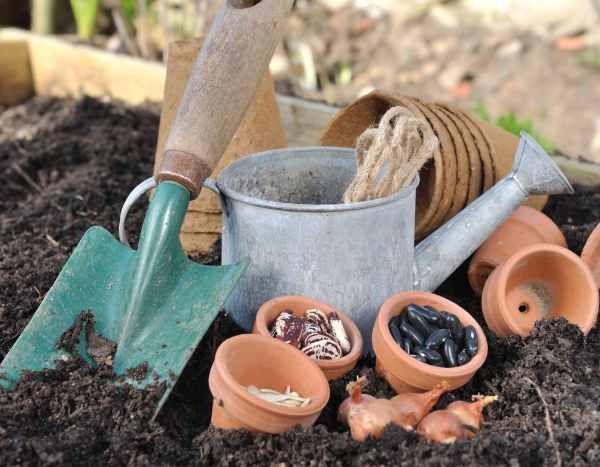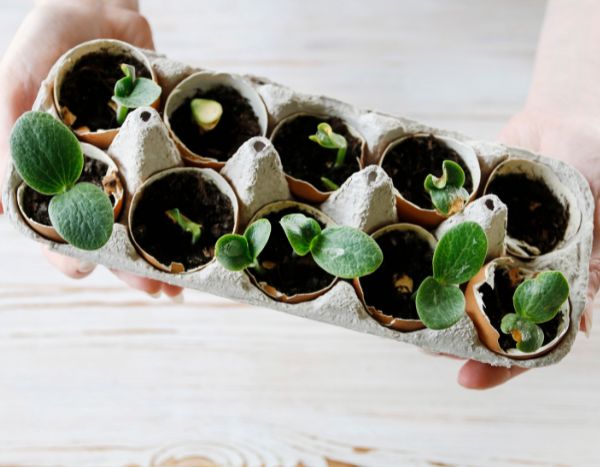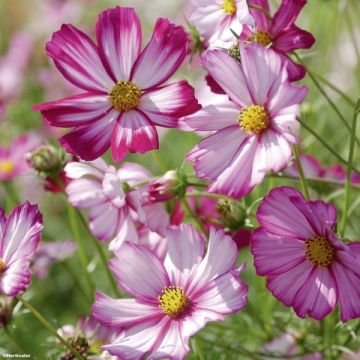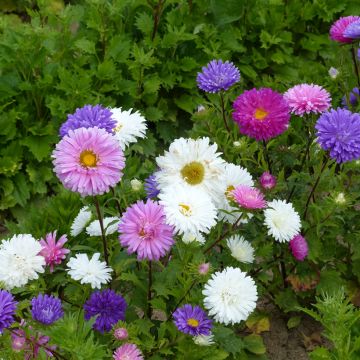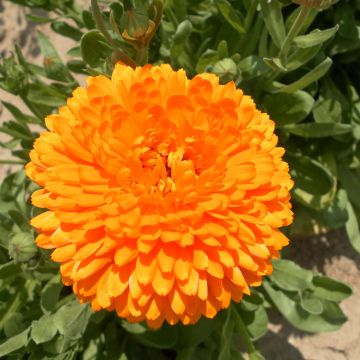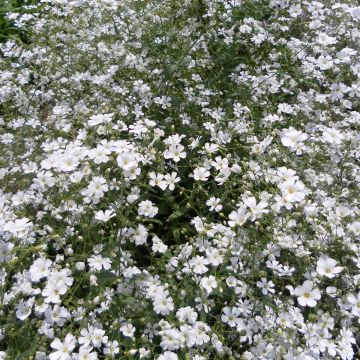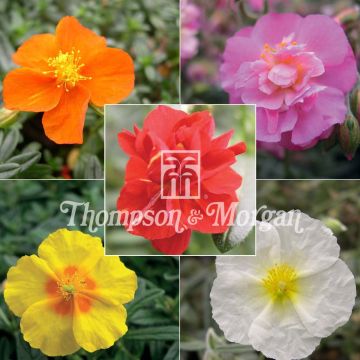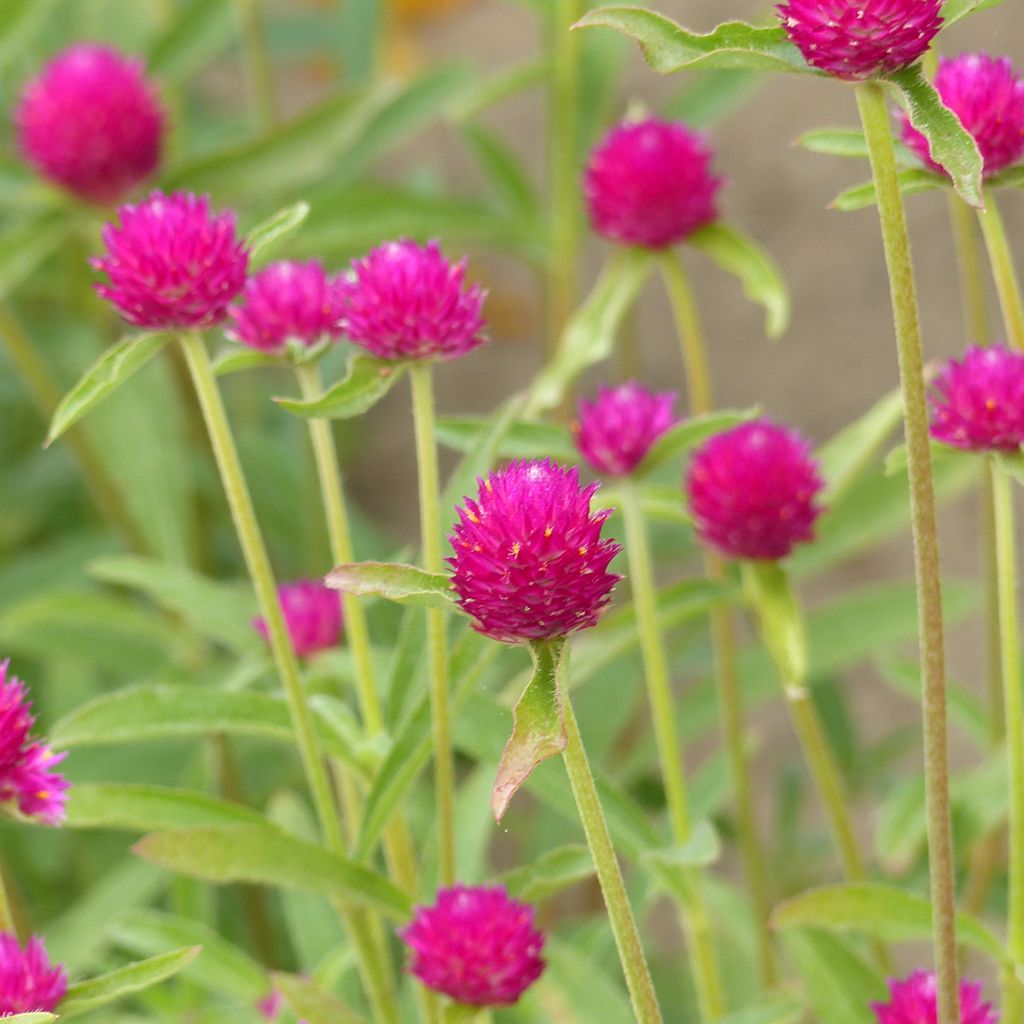

Gomphrena haagenana QIS® Carmine Seeds - Globe Amaranth
Gomphrena haagenana QIS® Carmine Seeds - Globe Amaranth
Gomphrena haageana QIS® Carmine
Fireweed, Globe amaranth, Bachelor's button
Special offer!
Receive a €20 voucher for any order over €90 (excluding delivery costs, credit notes, and plastic-free options)!
1- Add your favorite plants to your cart.
2- Once you have reached €90, confirm your order (you can even choose the delivery date!).
3- As soon as your order is shipped, you will receive an email containing your voucher code, valid for 3 months (90 days).
Your voucher is unique and can only be used once, for any order with a minimum value of €20, excluding delivery costs.
Can be combined with other current offers, non-divisible and non-refundable.
Home or relay delivery (depending on size and destination)
Schedule delivery date,
and select date in basket
This plant carries a 6 months recovery warranty
More information
We guarantee the quality of our plants for a full growing cycle, and will replace at our expense any plant that fails to recover under normal climatic and planting conditions.
Does this plant fit my garden?
Set up your Plantfit profile →
Description
Gomphrena QIS Carmine is a horticultural variety of a Mexican perennial plant cultivated as an annual. Spring sowing under heated cover produces young plants that flower throughout the summer in the garden. Also known as Scarlet Gomphrena, it forms bushy clumps that send up several upright stems towards the sky. Each is topped by a solitary, clover-like flower whose vivid carmine pink is beautifully highlighted by the slightly greyish green foliage. Very ornamental when planted en masse, it also makes superb bouquets for the vase.
Scarlet Amaranth, scientific name Gomphrena haageana, belongs to the botanical family Amaranthaceae, which is rich with 174 genera and over 2000 species. Very widespread in tropical climates, they are often herbaceous plants, some of which are annuals. In our gardens, they have both vegetable and ornamental uses; the family is represented by spinach and the popular Celosias, used for bedding displays. The Gomphrena genus comprises around a hundred wild species, herbaceous or suffruticose (undershrubs), originating mainly from North and South America, Australia and the Pacific Islands. Gomphrena haageana grows naturally in Mexico, on rocky slopes, at an altitude of 1200 to 1500 m. There are several horticultural varieties, including Gomphrena QIS Carmine, which takes its name from the carmine pink colour of its flowers. This fast-growing plant flowers less than 100 days after sowing. Each plant produces several stems that grow vertically up to 80 cm in height. They bear opposite, lanceolate and narrow leaves, measuring approximately 5 cm long, and a fairly dark green, leaning slightly towards grey. The stems bear only one globular, terminal flower, about 2 cm in diameter. The vivid colour of the flowers is perfectly highlighted by the darker foliage. It is best to sow this plant en masse, so the small size of the flowers is compensated for by their number, and the effect achieved is very ornamental. Flowering begins in July and continues until September, sometimes even October. The long stems are perfectly suited for making original and long-lasting bouquets. Used in dried bouquets, the flowers retain their colour and can decorate the home for weeks after the main growing season.
Sow Gomphrena QIS Carmine en masse to ensure months of original and beautiful flowers. Plant them in full sun, in the second row of your beds, alongside Cosmos 'Sonata White' which will create a lovely contrast of form and colour. In front, sow Love-in-a-mist 'Miss Jekyll Blue', a slightly shorter annual with sumptuous pale blue flowers, which will accompany your Gomphrena, also known as Amarantoïde, to form superb bouquets. In the background you could plant Salvia 'Black and Blue', a spectacular variety that will captivate you with its giant size and astonishing blue and black flowers.
Report an error about the product description
Flowering
Foliage
Plant habit
Botanical data
Gomphrena
haageana
QIS® Carmine
Amaranthaceae
Fireweed, Globe amaranth, Bachelor's button
Cultivar or hybrid
Planting and care
Gomphrena QIS Carmine can be sown in two ways.
1/ Early sowing: from March (6 to 8 weeks before the last spring frosts) under cover in a seed tray, maintaining a temperature of 18 to 21°C. To facilitate germination, you can soak the seeds in water for 24 hours to soften the seed casing. Then place them on the surface of the moist sowing compost, as they need light to germinate. The seedlings germinate in 14 to 21 days. When they have grown large enough to be moved, you can separate them and put them in pots if the frost period is not over, and keep them warm. Otherwise, you can plant them out in the ground, spacing them 30 cm apart. Watering will only be necessary in case of drought during the first few weeks after planting.
2/ Direct sowing in the ground: in May or June depending on your region, after the last frosts, sow the seeds in their final position in the garden, spacing the seeds 15 to 20 cm apart. Prepare the soil well beforehand to create the "seed bed": break up the soil, remove stones, rake level and water.
It takes an average of 75 to 100 days from sowing to the start of flowering.
Choose a very sunny location, in well-drained soil, and water occasionally during summer.
Sowing period
Intended location
Planting & care advice
This item has not been reviewed yet - be the first to leave a review about it.
Similar products
Haven't found what you were looking for?
Hardiness is the lowest winter temperature a plant can endure without suffering serious damage or even dying. However, hardiness is affected by location (a sheltered area, such as a patio), protection (winter cover) and soil type (hardiness is improved by well-drained soil).

Photo Sharing Terms & Conditions
In order to encourage gardeners to interact and share their experiences, Promesse de fleurs offers various media enabling content to be uploaded onto its Site - in particular via the ‘Photo sharing’ module.
The User agrees to refrain from:
- Posting any content that is illegal, prejudicial, insulting, racist, inciteful to hatred, revisionist, contrary to public decency, that infringes on privacy or on the privacy rights of third parties, in particular the publicity rights of persons and goods, intellectual property rights, or the right to privacy.
- Submitting content on behalf of a third party;
- Impersonate the identity of a third party and/or publish any personal information about a third party;
In general, the User undertakes to refrain from any unethical behaviour.
All Content (in particular text, comments, files, images, photos, videos, creative works, etc.), which may be subject to property or intellectual property rights, image or other private rights, shall remain the property of the User, subject to the limited rights granted by the terms of the licence granted by Promesse de fleurs as stated below. Users are at liberty to publish or not to publish such Content on the Site, notably via the ‘Photo Sharing’ facility, and accept that this Content shall be made public and freely accessible, notably on the Internet.
Users further acknowledge, undertake to have ,and guarantee that they hold all necessary rights and permissions to publish such material on the Site, in particular with regard to the legislation in force pertaining to any privacy, property, intellectual property, image, or contractual rights, or rights of any other nature. By publishing such Content on the Site, Users acknowledge accepting full liability as publishers of the Content within the meaning of the law, and grant Promesse de fleurs, free of charge, an inclusive, worldwide licence for the said Content for the entire duration of its publication, including all reproduction, representation, up/downloading, displaying, performing, transmission, and storage rights.
Users also grant permission for their name to be linked to the Content and accept that this link may not always be made available.
By engaging in posting material, Users consent to their Content becoming automatically accessible on the Internet, in particular on other sites and/or blogs and/or web pages of the Promesse de fleurs site, including in particular social pages and the Promesse de fleurs catalogue.
Users may secure the removal of entrusted content free of charge by issuing a simple request via our contact form.
The flowering period indicated on our website applies to countries and regions located in USDA zone 8 (France, the United Kingdom, Ireland, the Netherlands, etc.)
It will vary according to where you live:
- In zones 9 to 10 (Italy, Spain, Greece, etc.), flowering will occur about 2 to 4 weeks earlier.
- In zones 6 to 7 (Germany, Poland, Slovenia, and lower mountainous regions), flowering will be delayed by 2 to 3 weeks.
- In zone 5 (Central Europe, Scandinavia), blooming will be delayed by 3 to 5 weeks.
In temperate climates, pruning of spring-flowering shrubs (forsythia, spireas, etc.) should be done just after flowering.
Pruning of summer-flowering shrubs (Indian Lilac, Perovskia, etc.) can be done in winter or spring.
In cold regions as well as with frost-sensitive plants, avoid pruning too early when severe frosts may still occur.
The planting period indicated on our website applies to countries and regions located in USDA zone 8 (France, United Kingdom, Ireland, Netherlands).
It will vary according to where you live:
- In Mediterranean zones (Marseille, Madrid, Milan, etc.), autumn and winter are the best planting periods.
- In continental zones (Strasbourg, Munich, Vienna, etc.), delay planting by 2 to 3 weeks in spring and bring it forward by 2 to 4 weeks in autumn.
- In mountainous regions (the Alps, Pyrenees, Carpathians, etc.), it is best to plant in late spring (May-June) or late summer (August-September).
The harvesting period indicated on our website applies to countries and regions in USDA zone 8 (France, England, Ireland, the Netherlands).
In colder areas (Scandinavia, Poland, Austria...) fruit and vegetable harvests are likely to be delayed by 3-4 weeks.
In warmer areas (Italy, Spain, Greece, etc.), harvesting will probably take place earlier, depending on weather conditions.
The sowing periods indicated on our website apply to countries and regions within USDA Zone 8 (France, UK, Ireland, Netherlands).
In colder areas (Scandinavia, Poland, Austria...), delay any outdoor sowing by 3-4 weeks, or sow under glass.
In warmer climes (Italy, Spain, Greece, etc.), bring outdoor sowing forward by a few weeks.




































